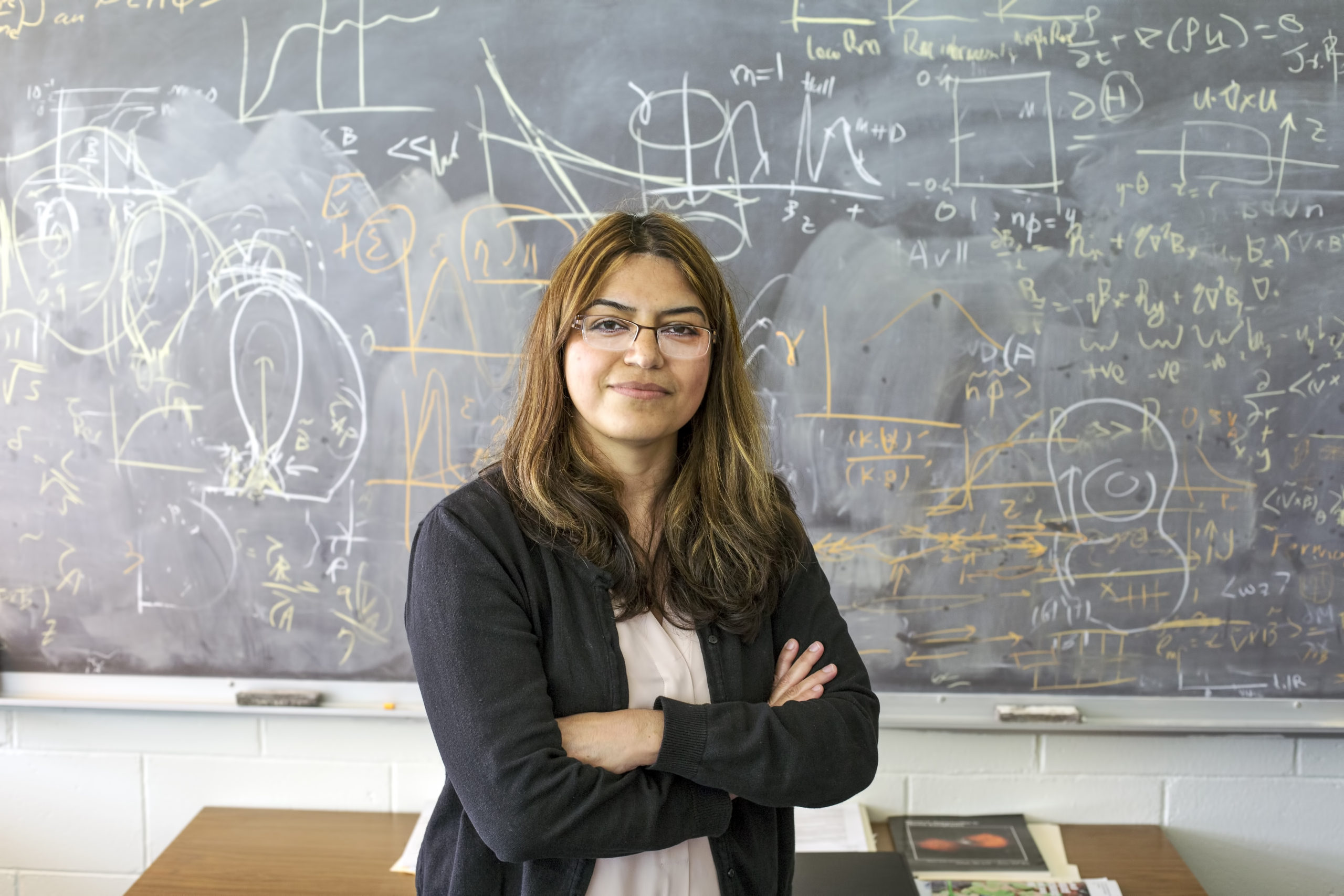Princeton rocket scientist Fatima Ebrahimi is investigating a new method of powering rocket thrusters. Her design is projected to be many times more efficient and powerful than the current model. Scientists hope to use this new technology to send astronauts to Mars. Engineers including NASA’s Asad Aboobaker are also researching oxygen devices to help humans breathe on the red planet.
Ebrahimi is a Principal Research Physicist at Princeton University’s Plasma Physics Laboratory (PPPL). She is also an Affiliated Research Scholar with the university’s Department of Astrophysical Sciences.
Ebrahimi was an elected member of the APS Topical Group in Plasma Astrophysics committee from 2018-2021. She was a program committee member for U.S. Magnetic Fusion Research Strategic Directions from 2017-2018.
(Plasma) Physicist Fatima Ebrahimi
Ebrahimi earned her Ph.D. in Plasma Physics with a focus on fusion from the University of Wisconsin-Madison in 2003. Ebrahimi then spent a year conducting research at the Royal Institute of Technology’s Alfven Laboratory in Sweden. She returned to the University of Wisconsin to work in their National Science Foundation Frontier Center for Magnetic Self-Organization in Laboratory and Astrophysical Plasmas. There she spent four years, first a Research Associate and then a Research Scientist.
In 2010 the scientist joined the University of New Hampshire as an Assistant Professor where she continued to study fusion. In 2013 Ebrahimi began at Princeton’s Department of Astrophysical Sciences as a Research Scholar. She became a Principal Research Physicist at the PPPL in 2016.
Ebrahimi has published several papers in leading peer-reviewed journals. Her more recent publications include “System and method for alfvenic reconnecting plasmoid plasma acceleration” (2022). She also wrote “A rocket thruster that could take humans to Mars and beyond” (2022).
Fatima Ebrahimi hails from Iran
Ebrahimi was a teenager during the Iran-Iraq War in the 1980s. With an aptitude towards math, she turned to physics and equations to cope with the chaos.
“Even if I was surrounded by all this craziness, it was a thing I could just do,” she told OZY.
Ebrahimi went on to obtain a degree in physics from the Polytechnic University of Tehran. The scientist later moved to the U.S. to continue her pursuit of physics at the University of Wisconsin.
Plasma fusion rockets might take humans to Mars
Current plasma thrusters get their power by using electric fields to propel particles. This method can only produce low speed. Ebrahimi’s design uses a magnetic field in which particles accelerate due to magnetic reconnection. These particles would then shoot out from underneath the rocket and propel it forward.
Magnetic reconnection is a process found throughout the universe, including on the surface of the sun. Donut-shaped fusion power devices known as tokamaks also use magnetic reconnection.
“I had the idea in 2017 while sitting on a deck and thinking about the similarities between a car’s exhaust and the high-velocity exhaust particles created by PPPL’s National Spherical Torus Experiment (NSTX),” Ebrahimi said in a Princeton interview. “During its operation, this tokamak produces magnetic bubbles called plasmoids that move at around 20 kilometers per second, which seemed to me a lot like thrust.”
Computer simulations at the PPPL and affiliated centers show that this process generates velocities 10x faster than the current model. Scientists hope this could one day take astronauts to Mars.
“Long-distance travel takes months or years because the specific impulse of chemical rocket engines is very low, so the craft takes a while to get up to speed,” Ebrahimi said. “But if we make thrusters based on magnetic reconnection, then we could conceivably complete long-distance missions in a shorter period of time.”



